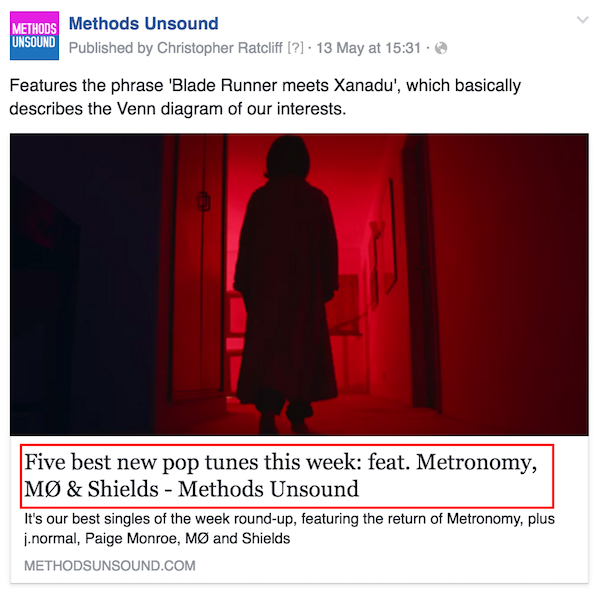The Mystic Media Blog will be devoting our expertise into a five-part series of articles detailing the ins and outs of Promotional Writing. The series will cover several topics, including general techniques, suggested processes, press releases, website copy writing, and social media.
Last week, we tackled an overview of Promotional Writing and covered some general techniques for writing engaging copy. This week, we’re going in-depth into the processes you can use to ensure the smooth creation of compelling copy.
WRITING AN ENGAGING TITLE
Where to begin is often the hardest part of writing.
When competing with an overload of content aimed at drawing attention (be it emails, newsletters, website copy, advertisements, or what have you), it’s vital to begin by capturing the audience’s attention. The title of any piece will determine if the reader will continue to read it. The key is to connect with your audience immediately by ensuring them that the piece is relevant to them.
Instead of titling a piece with a factual statement on the subject, propose a problem. By proposing a common, easily relatable problem, you’re much more likely to connect with the reader. If the opening message connects with the reader, they will continue to read.
Say you’re working for an application development firm writing a newsletter or advertisement about a business intelligence app.
Instead of opening with: “New App Makes Business Intelligence Easy”,
Ask the viewer: “Trouble Keeping Up with Your Workflow?”
Whereas the first example incites a reaction in which the reader may immediately reject the notion of a new app, the second incites empathy. Most people have occasional trouble with their workflow, thus the headline is directly relevant to them. It’s a problem they need to solve. There’s no risk in reading on, but failure to read may prevent the audience from enriching their life with a solution.
Check out this informative article over at Author’s Den on promotional writing which offers four formulas for writing a good title.
ESTABLISH THE DESIRED ACTION RESPONSE
Unlike an essay, the goal of promotional writing is not to demonstrate a thesis, but to persuade the reader to take action.
The Desired Action Response is whatever the writer intends for the reader to do after they finish the piece. It could be to buy something. It could be to click something. It could be to ingrain the brand in your brain. In the case of a blog, it could be to engage the reader with an opinion and prove your expertise. Before diving into a piece, it’s vital to phrase the Desired Action Response into a single statement and move forward based on generating the action.
For more on the Desired Action Response, check out this “formula” for good promotional writing.
OUTLINE BASED ON STIMULATING ACTION
Once you’ve established the Desired Action Response, every sentence in a promotional piece must contribute to the goal of triggering it. The process of outlining offers the opportunity to design a piece to induce a specific train of thought which could potentially cause the reader to take action. The process of outlining will strengthen the argument and improve the flow of the writing.
Before writing, create a flow-chart of the streams of thought which would have to go through a consumer’s mind in order to act. Focus on both positive effects caused by the product or service, as well as the negative effects the product or service helps the consumer avoid. As you flesh out your thoughts, strengthen your argument by analyzing how a reluctant consumer might poke holes in your points and actively working to stay a step ahead of the curve by addressing potential pitfalls.
For more information on honing your arguments, check out this cool article over at Mind Tools about analyzing your relationship with your audience.
Upon completing a flow-chart, write an outline of the piece using sub-headings to specify the purpose of each paragraph. Create a logical structure based on how best to order the argument. Ensure that each paragraph pushes forward the ideas from the paragraph preceding it and/or sets-up the next paragraph. Once you’ve created a logical structure, flesh out your paragraphs with complete sentences, cap the piece off with a call-to-action and you will have a complete first draft!
RAVICE, RAVISE, REVISE
A first draft will sometimes suffice when it comes to copy writing, but most businesses hold their work up to a higher standard. For those interested improving their craft, the process of revision is crucial to not only understanding the medium, but to maximizing their skills.
If possible, it’s always helpful to get a proofread from a person who has distance from the piece. When a writer has been working on the same project for hours, it’s hard to get enough cognitive distance from the writing to accurately identify mistakes. An outside proofreader can read without context and therefore give unbiased opinions and observations.
If you don’t have anyone to proofread for you, spend a couple hours doing something else and come back to the piece. When you return, you should have the distance you need to objectively proofread.
During the proofreading process, be sure to consistently link features to benefits. A feature describes a product or service, whereas a benefit describes the positive effects the product or service has on the reader.
Instead of writing: “The new Macbooks come with Retina Display”,
Write: “The new Macbook’s Retina Display screen is easier on your eyes, creating unparalleled clarity in the viewing experience.”
The first statement describes a feature of the product, while the second directly links the feature to a positive effect on the consumer, making for more effective marketing .
The goal of revision is not simply to correct grammatical errors, but to hone what’s on the page and fully realize ideas. Once the benefits of the product or service have been effectively and efficiently communicated with the goal of provoking the desired action response, publish it and get started on the next one.
In the next entry of our Promotional Writing series, we’ll tackle how to write an effective press release. Stay tuned!
At Mystic Media, our vast experience in strategic marketing and application development has given us expertise on the all formats of promotional writing: from copy writing, search engine optimization, social media marketing, web design, and more. Learn more by clicking here or by contacting us by phone at 801.994.6815
 Last week, we explored the art of perfecting title tags for SEO dominance. This week, we’ll explore another vital meta tag: the meta description.
Last week, we explored the art of perfecting title tags for SEO dominance. This week, we’ll explore another vital meta tag: the meta description.



